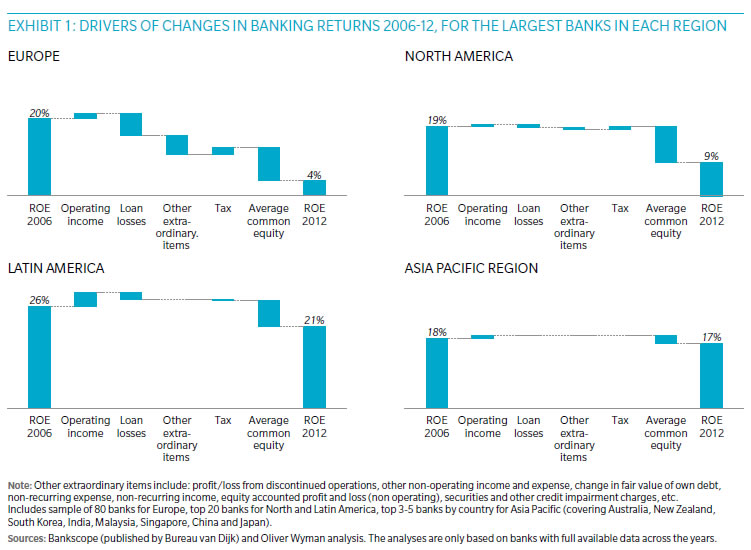This year’s report focuses on the growth challenge for the industry and identifies several “blind spots” that could impede the industry’s recovery and growth.
It briefly analyzes the road the industry is on and considers the trends observable across the world’s major economic regions: North America, Europe, Asia Pacific, and Latin America.
The blind spots assessed in the report are:
- The role of central banks – many countries are asking too much of central banks
- Stress testing – a vital new tool which will improve bank management and regulation, as long as the risks of over-standardization and regulatory capture are avoided
- The importance of digital – potential changes in payments, branch banking, financial advice and the use of social media will accelerate change in the industry, most likely to the benefit of fast-moving incumbents
- Talent management – as financial services has lost its cachet, the industry needs to up its game in finding, motivating, and developing its people
- Growth in insurance – the challenges and importance of returning the industry to healthy and profitable growth
- De-risking pensions – the closure of defined benefits pensions and resulting pension buyouts, moving risk from corporate balance sheets to individuals and insurers
Drivers of Changes in Banking Returns
Some challenges are global, others differ according to region, here’s why:
- North America: well-capitalised firms with low risk; for banking regulation is the central challenge; moderate economic recovery; life insurers benefiting from demographic characteristics
- Europe: firms are undergoing heavy restructuring; decoupling from sovereign credit risk and transition to European Banking Union are unknown; insurance industry potentially hampered by regulation
- Asia Pacific: solid growth in most markets; concerns about credit quality and impact of regulation; potential benefits if industry adjusts form “old industrial” model to a new economic model
- Latin America: focus should be on long-term investment needs that require funding, more access to financial products and prudent expansion of credit growth





